
GSFC Citizen Science and Crowdsourcing
We are a community at Goddard Space Flight Center (GSFC) using the power of citizen science and crowdsourcing to advance innovative scientific discovery and science education. Projects at GSFC span the fields of astrophysics, earth science, heliophysics, and planetary science. The group was founded in 2015 and continues to grow.
Get Involved
- We have meetings (alternating teleconference and in-person meetings) to share news, discuss project updates, collaborate, and listen to guest speakers.
- Subscribe to our Goddard-CrowdSci mailing list to keep updated about our meetings and send and receive community emails.
Poster
Check out our poster from the Goddard Science Jamboree to learn more:
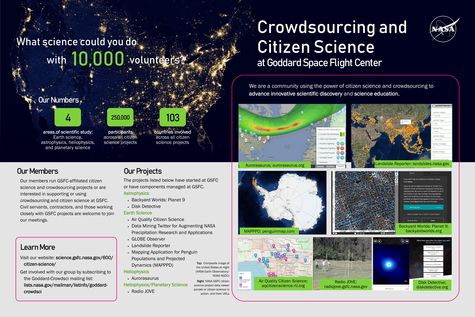
Click on the image for a larger view (PDF/2 MB)
Resources
Discover NASA Citizen Science:
- Citizen Science in NASA's Science Mission Directorate
- NASA Solve
- NASA Crowdsourcing Resource Repository (INTERNAL)
- NASA Crowdsourcing Resource Repository Listserv (INTERNAL)
- NASA@Work (INTERNAL)
Links and Tools:
- NASA Center of Excellence for Collaborative Innovation (CoECI)
- Federal Crowdsourcing and Citizen Science Toolkit
- Open NASA
- My NASA Data (MND)
Other Citizen Science Communities:
Our Projects
The projects listed below have started at Goddard Space Flight Center or have large components managed by GSFC members. The current projects include:
| Astrophysics | Backyard Worlds: Planet 9 | Disk Detective |
| Earth Science | Air Quality Citizen Science | Data Mining Twitter for Augmenting NASA Precipitation Research and Applications | GLOBE Observer | Landslide Reporter | Mapping Application for Penguin Populations and Projected Dynamics (MAPPPD) |
| Heliophysics | Aurorasaurus | Radio Jove | Spritacular |
| Planetary Science | Radio Jove |
Jump to: Astrophysics Earth Science Heliophysics Planetary Science Publications
Astrophysics
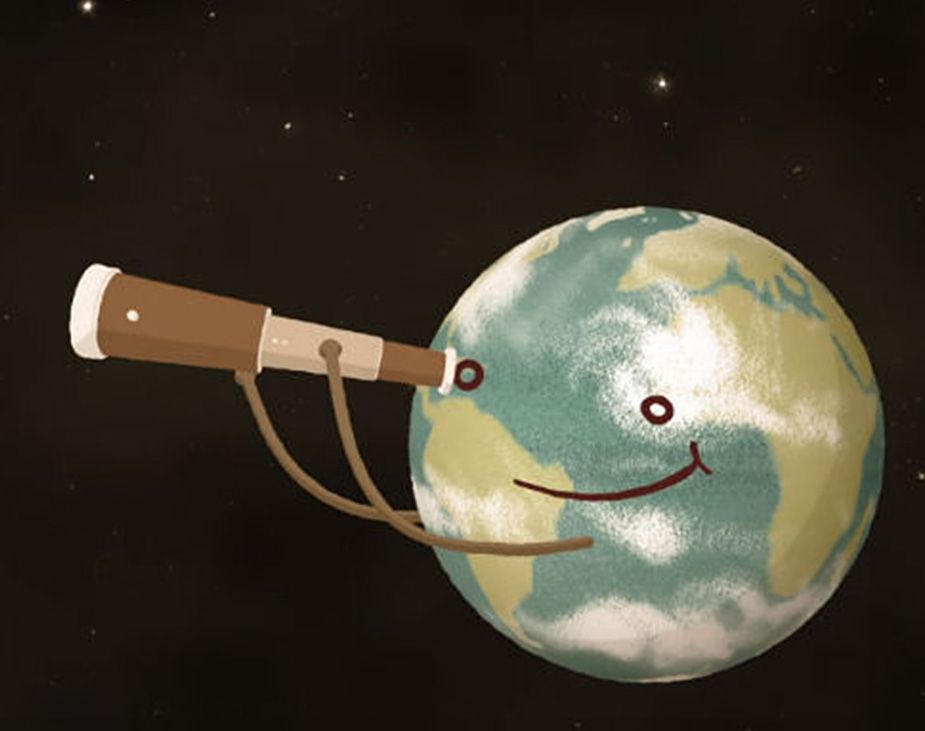
Is there a large planet at the fringes of our solar system awaiting discovery, a world astronomers call Planet Nine? We’re looking for this planet and for new brown dwarfs in the backyard of the solar system using data from NASA's Wide-field Infrared Survey Explorer (WISE) mission. But we need your help! Finding these dim objects requires combing through the images by eye to distinguish moving celestial bodies from ghosts and other artifacts. There are too many images for us to search through by ourselves. So come join the search, and you might find a rogue world that's nearer to the Sun than Proxima Centauri---or even the elusive Planet Nine. Launched Feb 15, 2017.
Website: http://www.backyardworlds.org/ |
Twitter: @backyardworlds
Contact: Dr. Marc Kuchner (marc.j.kuchner@nasa.gov)
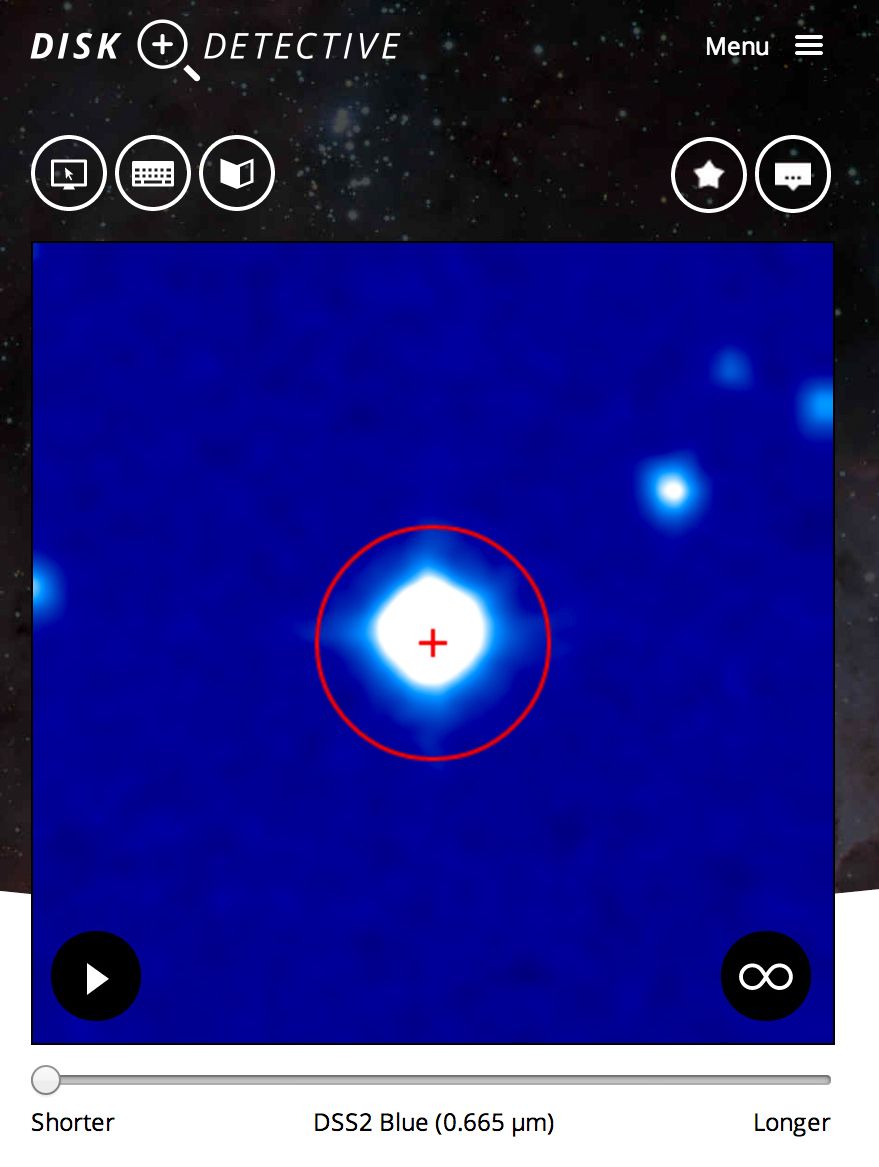
Search for protoplanetary disks in WISE data - WISE is a NASA mission surveying the whole sky in infrared. This project is looking at stars to find dusty debris disks, similar to our asteroid field. These disks suggest that these stars are in the early stages of forming planetary systems. Learning more about these stars can tell us how our Solar System formed. Computers often confuse debris disks around stars with other astronomical objects. Disk Detective needs your help to sort out what stars actually have these disks from galaxies and nebulae. Launched February, 2014.
Website: http://www.diskdetective.org/ |
Twitter: @diskdetective
Contact: Dr. Marc Kuchner (marc.j.kuchner@nasa.gov)
Earth Science
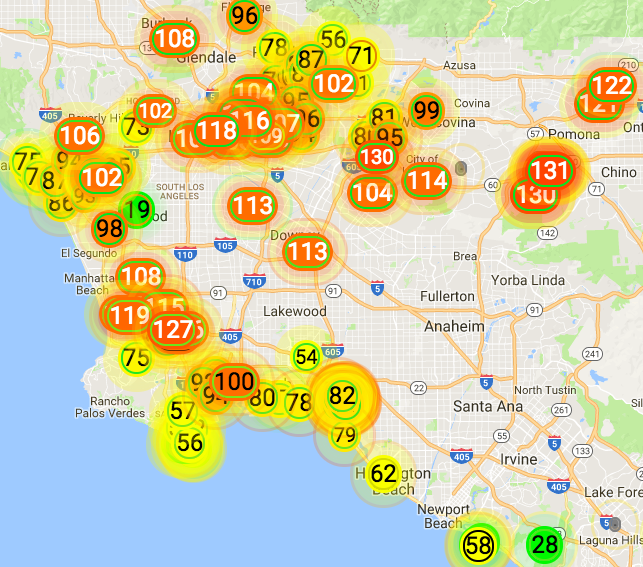
An ongoing study that uses low-cost sensors deployed by citizen scientists to examine the spatial gradients in surface fine particulate matter (PM2.5) concentrations and compare it to satellite observations of aerosols. We are performing a prototype field deployment of about 20 sensors through citizen scientists in the South Coast air basin in the Los Angeles area and in the inland Riverside/San Bernardino regions of Southern California.
Website: https://aqcitizenscience.rti.org/#/
Contact: Dr. Pawan Gupta (pawan.gupta@nasa.gov) and Dr. Robert Levy (robert.c.levy@nasa.gov)
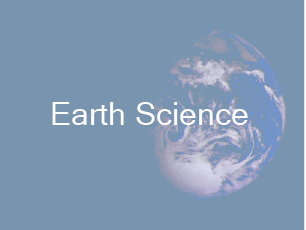
Data Mining Twitter for Augmenting NASA Precipitation Research and Applications
Project funded by the Citizen Science for Earth Systems Program, NASA ROSES NNH16ZDA001N-CSESP): This project explores the feasibility of extracting from the Twitter data stream useful information for application to NASA precipitation research, in particular, augmenting the existing validation program of the Global Precipitation Measurement (GPM) Mission. We are engaging with both 'passive' and 'active' participants to contribute to the project. Our general crowd-sourcing strategy is to not require participants to sign-up or install some app to contribute as citizen scientists. This is a more robust approach to gaining a large source of crowd. Our framework for processing Twitter data is currently focused on classifying tweets, determining quality, developing a data model, and co-locating tweets with satellite data. This framework will be generic, i.e., not specific to a given measurement, social medium, or satellite mission.
AGU Poster: Enriching the Twitter Stream: Increasing Data Mining Yield and Quality Using Machine Learning
Contacts: Arif Albayrak (rustem.a.albayrak@nasa.gov), Bill Teng (william.l.teng@nasa.gov), and George Huffman (george.j.huffman@nasa.gov)
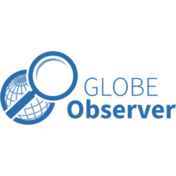
The Global Learning and Observations to Benefit the Environment (GLOBE) Program is an international science and education program that provides students and the public worldwide with the opportunity to participate in data collection and the scientific process, and contribute meaningfully to our understanding of the Earth system and global environment. Announced by the U.S. Government on Earth Day in 1994, GLOBE launched its worldwide implementation in 1995. The citizen science arm of GLOBE is the GLOBE Observer Program. The GLOBE Observer Program currently accepts cloud and mosquito habitat, land cover, and tree height observations through the NASA GLOBE Observer mobile app. Since GLOBE Observer is part of the GLOBE program, citizen scientists working on GLOBE Observer are also providing data for student research, strengthening science education.
Website: https://observer.globe.gov/ |
Twitter: @NASAGO | Facebook: @nasa.globeobserver
Contact: globeobserverhelp@lists.nasa.gov
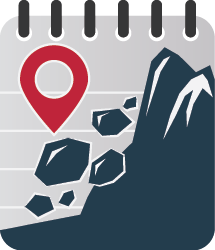
Landslides affect nearly all countries, but we still don't have a clear global picture on where and when landslides occur. Citizen scientists can help NASA scientists save lives and property by helping to build the largest open global landslide catalog, the Cooperative Open Online Landslide Repository (COOLR). The COOLR project seeks to cultivate an open platform where scientists and citizen scientists around the world can share landslide reports to guide awareness of landslide hazards for improving scientific modeling and emergency response. See all COOLR data in Landslide Viewer on top of other environmental and scientific data, or download all data. Use Landslide Reporter to submit new landslide events to COOLR.
Website: https://landslides.nasa.gov |
Twitter: @LandslideReport
Contact: landslide_support@nccs.nasa.gov, Dr. Dalia Kirschbaum, Thomas Stanley
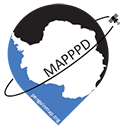
Mapping Application for Penguin Populations and Projected Dynamics (MAPPPD)
Over the last several years, penguin biologists have been working hard to find all the penguin colonies in Antarctica using satellite imagery. However, the massive expanse of the continent and the challenges of finding each last penguin colony leave many likely undiscovered. This is where you can help! Satellite imagery from NASA and other sources can detect the large guano stains left behind by penguins nesting in colonies. You can explore satellite imagery and contribute data to join the online expedition to find all of Antarctica’s penguins.
Website: www.penguinmap.com
Contact: Mathew Schwaller
Heliophysics
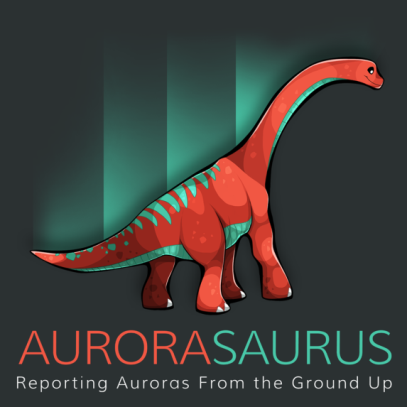
This project gathers real-time data about aurora sightings and sends out notifications to users when the Northern Lights are likely visible in their area. Aurorasaurus will significantly improve forecasting of the aurora using citizen science reports and crowd-sourced (Twitter) ground truth observations of aurora. Registered users get location-based notifications, a real-time monitor of space weather activity, the capability to help verify tweets and search for real sightings, answers to science and aurora questions, and more. Aurorasaurus was built by scientists for the public. The project was funded by an award from the National Science Foundation.
Website: http://www.aurorasaurus.org/ |
Twitter: @TweetAurora
Contact: Dr. Elizabeth MacDonald (elizabeth.a.macdonald@nasa.gov)
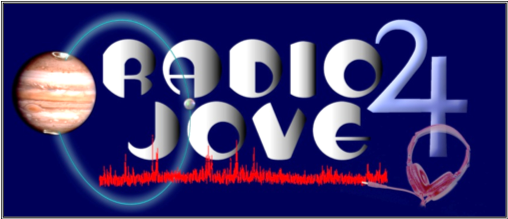
The Radio JOVE project was first established as an informal education and public outreach project for learning the excitement of radio astronomy of Jupiter, the Sun, and the Galaxy. Partnering with the NASA Space Science Education Consortium (NSSEC), the Radio JOVE project has been extended to incorporate citizen science research in heliophysics. By participating in the project, citizen scientists can (1) gain hands-on experience in building and operating single-frequency radio telescopes constructed from inexpensive kits, (2) make radio observations by operating their basic radio telescopes, and (3) analyze the data obtained by the telescopes they constructed or from remote telescopes through the Internet. More technically capable participants can also set up spectrograph stations in conjunction with their basic single-frequency telescopes. The NSSEC-Radio JOVE partnership is working toward building a network of low-cost radio telescopes to provide more scientifically valuable data from solar and planetary radio observations to support heliophysics, space weather, and radio science research.
Website: https://radiojove.gsfc.nasa.gov/
Contact: Shing F. Fun (shing.f.fung@nasa.gov)

The region of space above thunderstorms, middle and upper atmosphere (15-100 km altitude), is home for various types of atmospheric electrical discharges that are collectively referred to as Transient Luminous Events (TLEs). Although they have different morphologies, time scales, spatial scales, initiation altitudes, and physical mechanisms, they are all connected to the tropospheric electrical activity. Sprites are the most observed type, and they are primarily red in color. They occur at the edge of space, and they move with speed so fast that if you blink, you might miss it. Spritacular project, launched in October of 2022, aims to collect observations of sprites and other TLEs. The database generated from these observations will lay the groundwork for first-ever crowdsourced event catalog that can be augmented into scientific studies as a new ground-based observational data source. This database will serve as an invaluable resource for researchers allowing them to find interesting cases, perform studies in conjunction with other scientific data, and conduct broad statistical studies. This project was funded by NASA Citizen Science Seed Funding Program.
You can find out more about sprites on the project's blog. This article provides a great introduction to sprite-chasing. Here's a short video from Goddard Glossary explaining sprites. Check out this video to hear why sprite chasers love what they do. See project scientist Dr. Burcu Kosar talking about sprites and Spritacular with Miles Hatfield from NASA Heliophysics Science Division.
Website: https://spritacular.org | Follow the project on X @Spritacular
Contact: Dr. Burcu Kosar (burcu.kosar@nasa.gov)
Planetary Science

The Radio JOVE project was first established as an informal education and public outreach project for learning the excitement of radio astronomy of Jupiter, the Sun, and the Galaxy. Partnering with the NASA Space Science Education Consortium (NSSEC), the Radio JOVE project has been extended to incorporate citizen science research in heliophysics. By participating in the project, citizen scientists can (1) gain hands-on experience in building and operating single-frequency radio telescopes constructed from inexpensive kits, (2) make radio observations by operating their basic radio telescopes, and (3) analyze the data obtained by the telescopes they constructed or from remote telescopes through the Internet. More technically capable participants can also set up spectrograph stations in conjunction with their basic single-frequency telescopes. The NSSEC-Radio JOVE partnership is working toward building a network of low-cost radio telescopes to provide more scientifically valuable data from solar and planetary radio observations to support heliophysics, space weather, and radio science research.
Website: https://radiojove.gsfc.nasa.gov/
Contact: Shing F. Fun (shing.f.fung@nasa.gov)
Publications
- Aikpon, R., Klotoé, J.R., Dramane, G., Brettenny, M., and Lawani, Y., (2019). Larval breeding characteristics and distribution of Aedes mosquito species in the economic capital of Benin: A public health concern. International Journal of Entomology Research, 4(3):57-62.
- Bardalez Gagliuffi, Daniella C.; Faherty, Jacqueline K.; Schneider, Adam C.; Meisner, Aaron; Caselden, Dan; Colin, Guillaume; Goodman, Sam; Kirkpatrick, J. Davy; Kuchner, Marc; Gagné, Jonathan; Logsdon, Sarah E.; Burgasser, Adam J.; Allers, Katelyn; Debes, John; Wisniewski, John; Rothermich, Austin; Andersen, Nikolaj Stevnbak; Thévenot, Melina; Walla, Jim; Backyard Worlds: Planet 9 Collaboration “WISEA J083011.95+283716.0: A Missing Link Planetary-mass Object”, The Astrophysical Journal, Volume 895, Issue 2, id.145, 11 pp. (2020). DOI: 10.3847/1538-4357/ab8d25
- Brooks, Hunter, Kirkpatrick, J. Davy, Caselden, Dan, Schneider, Adam C., Meisner, Aaron M., Faherty, Jacqueline K., Casewell, S. L., Kuchner, Marc J., Backyard Worlds: Planet 9 Collaboration “Discovery of CWISE J052306.42-015355.4, an Extreme T Subdwarf Candidate” The Astronomical Journal, Volume 163, Issue 2, id.47, 6 pp. February 2022. DOI: 10.3847/1538-3881/ac3a0a
- Case, N. A., E. A. MacDonald, M. Heavner, A. H. Tapia, and N. Lalone (2015), Mapping auroral activity with Twitter. Geophys. Res. Lett., 42, 3668–3676. doi:10.1002/2015GL063709.
- Case, N., MacDonald, E., & Patel, K. (2015). Aurorasaurus and the St Patrick's Day storm. Astronomy and Geophysics, 56(3), 3-13. doi: 10.1093/astrogeo/atv089.
- Case, N. A., E. A. MacDonald, and R. Viereck (2016), Using citizen science reports to define the equatorial extent of auroral visibility, Space Weather, 14, 198–209, doi:10.1002/2015SW001320.
- Case, N. A., D. Kingman, and E. A. MacDonald (2016), A real-time hybrid aurora alert system: Combining citizen science reports with an auroral oval model, Earth and Space Science, 3, 257–265, doi:10.1002/2016EA000167.
- Caselden, D., Westin, P. III, Meisner, A., Kuchner, M., & Colin, G. (2017). WiseView: Visualizing motion and variability of faint WISE sources. Astrophysics Source Code Library. ascl:1806.004.
- Debes, J.H., Thevenot, M., Kuchner, M. J. et al. (2019). A 3 Gyr White Dwarf with Warm Dust Discovered via the Backyard Worlds: Planet 9 Citizen Science Project.' Astrophysical Journal Letters, Volume 872, Issue 2, article id. L25, 6 pp. doi: 10.3847/2041-8213/ab0426
- Dodson, J.B., Colón Robles, M.,Taylor J.E., DeFontes, C.C., Weaver K.L., (2019). Eclipse Across America: Citizen Science Observations of the 21 August 2017 Total Solar Eclipse. Journal of Applied Meteorology & Climatolog. doi: 10.1175/JAMC-D-18-0297.1
- Faherty, Jacqueline K., Gagne, Jonathan, Popinchalk, Mark, Vos, Johanna M., Burgasser, Adam J., Schumann, Jorg, Schneider, Adam C., Kirkpatrick, J. Davy, Meisner, Aaron M., Kuchner, Marc J., Bardalez Gagliuffi, Daniella C., Marocco, Federico, Caselden, Dan, Gonzales, Eileen C., Rothermich, Austin, Casewell, Sarah L., Debes, John H., Aganze, Christian, Ayala, Andrew, Hsu, Chih-Chun, Cooper, William J., Smart, R. L., Gerasimov, Roman, Theissen, Christopher A. and The Backyard Worlds: Planet 9 Collaboration “A Wide Planetary Mass Companion Discovered Through the Citizen Science Project Backyard Worlds: Planet 9” The Astrophysical Journal, Volume 923, Issue 1, id.48, 15 pp. Pub Date: December 2021. DOI: 10.3847/1538-4357/ac2499
- Jacqueline K. Faherty, Sam Goodman, Dan Caselden, Guillaume Colin, Marc J. Kuchner, Aaron Meisner, Jonathan Gagné, Adam C. Schneider, Eileen C. Gonzales, Daniella C. Bardalez Gagliuffi, Sarah E. Logsdon, Kately Allers, Adam J,. Burgasser, “WISE2150-7520AB: A very low mass, wide co-moving brown dwarf system discovered through the citizen science project Backyard Worlds: Planet 9” Astrophysical Journal (2020). https://arxiv.org/abs/1911.04600
- Fung, S. F., Typinski, D., Flagg, R., Ashcraft, T., Greenman, W., Higgins, C., Brown, J., Dodd, L., Reyes, F., Sky, J., Thieman, J., and Garcia, L. (2020). Propagation Teepee: A possible high‐frequency (15–30 MHz) remote lightning signature identified by citizen scientists. Geophysical Research Letters, 47, e2020GL087307. https://doi.org/10.1029/2020GL087307
- Gupta, P., Doraiswamy, P., Levy, R., Pikelnaya, O., Maibach, J., Feenstra, B., et al. (2018). Impact of California fires on local and regional air quality: The role of a low-cost sensor network and satellite observations. GeoHealth, 2. doi:10.1029/2018GH000136.
- Humphries, G. R. W., Naveen, R., Schwaller, M., Che-Castaldo, C., McDowall, P., Schrimpf, M., & Lynch, H. J. (2017). Mapping application for penguin populations and projected dynamics (MAPPPD): data and tools for dynamic management and decision support. Polar Record, 53(2), 160-166. doi:10.1017/S0032247417000055.
- Hunnekuhl, M., & MacDonald, E. (2020). Early ground‐based work by auroral pioneer Carl Størmer on the high‐altitude detached subauroral arcs now known as “STEVE”. Space Weather, 18, e2019SW002384. https://doi.org/10.1029/2019SW002384
- Juang, C.S., Stanley, T.A. & Kirschbaum, D.B. (2019). Using citizen science to expand the global map of landslides: Introducing the Cooperative Open Online Landslide Repository (COOLR). PLoS ONE 14(7): e0218657. doi: 10.1371/journal.pone.0218657
- Kirkpatrick, J. Davy, Gelino, Christopher R., Faherty, Jacqueline K., Meisner, Aaron M., Caselden, Dan, Schneider, Adam C., Marocco, Federico, Cayago, Alfred J., Smart, R. L., Eisenhardt, Peter R., Kuchner, Marc J., Wright, Edward L., Cushing, Michael C., Allers, Katelyn N., Bardalez Gagliuffi, Daniella C., Burgasser, Adam J., Gagné, Jonathan, Logsdon, Sarah E., Martin, Emily C., Ingalls, James G., Lowrance, Patrick J., Abrahams, Ellianna S., Aganze, Christian, Gerasimov, Roman, Gonzales, Eileen C., Hsu, Chih-Chun, Kamraj, Nikita, Kiman, Rocio, Rees, Jon, Theissen, Christopher, Ammar, Kareem, Andersen, Nikolaj Stevnbak, Beaulieu, Paul, Colin, Guillaume, Elachi, Charles A., Goodman, Samuel J., Gramaize, Léopold, Hamlet, Leslie K., Hong, Justin, Jonkeren, Alexander, Khalil, Mohammed, Martin, David W., Pendrill, William, Pumphrey, Benjamin, Rothermich, Austin, Sainio, Arttu, Stenner, Andres, Tanner, Christopher, Thévenot, Melina, Voloshin, Nikita V. , Walla, Jim, Wędracki, Zbigniew and Backyard Worlds: Planet 9 Collaboration “The Field Substellar Mass Function Based on the Full-sky 20 pc Census of 525 L, T, and Y Dwarfs” The Astrophysical Journal Supplement Series, Volume 253, Issue 1, id.7, 85 pp. Pub Date: March 2021. DOI: 10.3847/1538-4365/abd107
- Kirkpatrick, J. Davy, Marocco, Federico, Caselden, Dan, Meisner, Aaron M., Faherty, Jacqueline K., Schneider, Adam C., Kuchner, Marc J., Casewell, S. L., Gelino, Christopher R. ; Cushing, Michael C., Eisenhardt, Peter R. ; Wright, Edward L., Schurr, Steven D. “The Enigmatic Brown Dwarf WISEA J153429.75-104303.3 (aka "The Accident")” The Astrophysical Journal Letters, Volume 915, Issue 1, id.L6, 7 pp. Pub Date: July 2021. DOI: 10.3847/2041-8213/ac0437
- Kota, Tarun, Kirkpatrick, J. Davy, Caselden, Dan, Marocco, Federico, Schneider, Adam C., Gagné, Jonathan, Faherty, Jacqueline K., Meisner, Aaron M., Kuchner, Marc J., Casewell, Sarah, Kacholia, Kanishk, Bickle, Tom, Beaulieu, Paul, Colin, Guillaume, Hamlet, Leslie K., Schümann, Jörg, Tanner, Christopher, The Backyard Worlds: Planet 9 Collaboration “Discovery of 16 New Members of the Solar Neighborhood using Proper Motions from CatWISE2020” The Astronomical Journal, Volume 163, Issue 3, id.116, 11 pp. March 2022. DOI: 10.3847/1538-3881/ac4713
- Kuchner, M. J., Faherty, J. K., Schneider, A. C., Meisner, A. M., Filippazzo, J. C., Gagné, J., ... & Mokaev, K. (2017). The First Brown Dwarf Discovered by the Backyard Worlds: Planet 9 Citizen Science Project. The Astrophysical Journal Letters, 841(2), L19. doi10.3847/2041-8213/aa7200.
- Kuchner, M. J., Silverberg, S. M., Bans, A. S., Bhattacharjee, S., Kenyon, S. J., Debes, J. H., ... & McElwain, M. (2016). Disk Detective: Discovery of New Circumstellar Disk Candidates through Citizen Science. The Astrophysical Journal, 830(2), 84. doi:10.3847/0004-637X/830/2/84.
- MacDonald, E. A., N. A. Case, J. H. Clayton, M. K. Hall, M. Heavner, N. Lalone, K. G. Patel, and A. Tapia (2015), Aurorasaurus: A citizen science platform for viewing and reporting the aurora, Space Weather, 13, 548–559, doi:10.1002/2015SW001214.
- MacDonald, E. A., Donovan, E., Nishimura, Y., Case, N. A., Gillies, D. M., Gallardo-Lacourt, B., ... & Heavner, M. (2018). New science in plain sight: Citizen scientists lead to the discovery of optical structure in the upper atmosphere. Science Advances, 4(3), eaaq0030. doi:10.1126/sciadv.aaq0030.
- Meisner, Aaron M., Schneider, Adam C., Burgasser, Adam J., Marocco, Federico, Line, Michael R., Faherty, Jacqueline K., Kirkpatrick, J. Davy, Caselden, Dan, Kuchner, Marc J., Gelino, Christopher R., Gagné, Jonathan, Theissen, Christopher, Gerasimov, Roman, Aganze, Christian, Hsu, Chih-chun, Wisniewski, John P., Casewell, Sarah L., Bardalez Gagliuffi, Daniella C., Logsdon, Sarah E., Eisenhardt, Peter R. M. Allers, Katelyn, Debes, John H., Allen, Michaela B., Stevnbak Andersen, Nikolaj, Goodman, Sam, Gramaize, Léopold, Martin, David W., Sainio, Arttu, Cushing, Michael C., and the Backyard Worlds: Planet 9 Collaboration. “New Candidate Extreme T Subdwarfs from the Backyard Worlds: Planet 9 Citizen Science Project” The Astrophysical Journal, Volume 915, Issue 2, id.120, 14 pp. Pub Date: July 2021. DOI: 10.3847/1538-4357/ac013c
- Meisner, Aaron M.; Faherty, Jacqueline K.; Kirkpatrick, J. Davy; Schneider, Adam C.; Caselden, Dan; Gagné, Jonathan; Kuchner, Marc J.; Burgasser, Adam J.; Casewell, Sarah L.; Debes, John H.; Artigau, Étienne; Bardalez Gagliuffi, Daniella C.; Logsdon, Sarah E.; Kiman, Rocio; Allers, Katelyn; Hsu, Chih-chun; Wisniewski, John P.; Allen, Michaela B.; Beaulieu, Paul; Colin, Guillaume; Durantini Luca, Hugo A.; Goodman, Sam; Gramaize, Léopold; Hamlet, Leslie K.; Hinckley, Ken; Kiwy, Frank; Martin, David W.; Pendrill, William; Rothermich, Austin; Sainio, Arttu; Schümann, Jörg; Andersen, Nikolaj Stevnbak; Tanner, Christopher; Thakur, Vinod; Thévenot, Melina; Walla, Jim; Wędracki, Zbigniew; Aganze, Christian; Gerasimov, Roman; Theissen, Christopher; Backyard Worlds: Planet 9 Collaboration. “Spitzer Follow-up of Extremely Cold Brown Dwarfs Discovered by the Backyard Worlds: Planet 9 Citizen Science Project” The Astrophysical Journal, 899:123 (30pp), August 20, 2020. DOI: 10.3847/1538-4357/aba633
- Schneider, Adam C.; Burgasser, Adam J.; Gerasimov, Roman; Marocco, Federico; Gagné, Jonathan; Goodman, Sam; Beaulieu, Paul; Pendrill, William; Rothermich, Austin; Sainio, Arttu; Kuchner, Marc J.; Caselden, Dan; Meisner, Aaron M.; Faherty, Jacqueline K.; Mamajek, Eric E.; Hsu, Chih-Chun; Greco, Jennifer J.; Cushing, Michael C.; Kirkpatrick, J. Davy; Bardalez-Gagliuffi, Daniella Logsdon, Sarah E.; Allers, Katelyn; Debes, John H.; Backyard Worlds: Planet 9 Collaboration “WISEA J041451.67-585456.7 and WISEA J181006.18-101000.5: The First Extreme T-type Subdwarfs?” The Astrophysical Journal, Volume 898, Issue 1, id.77. DOI: 10.3847/1538-4357/ab9a40
- Schneider, Adam C., Meisner, Aaron M., Gagné, Jonathan, Faherty, Jacqueline K., Marocco, Federico, Burgasser, Adam J., Kirkpatrick, J. Davy, Kuchner, Marc J., Gramaize, Léopold, Rothermich, Austin, Brooks, Hunter, Vrba, Frederick J., Bardalez Gagliuffi, Daniella, Caselden, Dan, Cushing, Michael C., Gelino, Christopher R., Line, Michael R., Casewell, Sarah L., Debes, John H., Aganze, Christian, Ayala, Andrew, Gerasimov, Roman, Gonzales, Eileen C., Hsu, Chih-Chun, Kiman, Rocio, Popinchalk, Mark, Theissen, Christopher, The Backyard Worlds: Planet 9 Collaboration “Ross 19B: An Extremely Cold Companion Discovered via the Backyard Worlds: Planet 9 Citizen Science Project” The Astrophysical Journal, Volume 921, Issue 2, id.140, 13 pp. November 2021. DOI: 10.3847/1538-4357/ac1c75
- Maria C. Schutte, Kellen. D. Lawson, John P. Wisniewski, Marc J. Kuchner, Steven M. Silverberg, Jacqueline K. Faherty, Daniella C. Bardalez Gagliuffi, Rocio Kiman, Jonathan Gagné, Aaron Meisner, Adam C. Schneider, Alissa S. Bans, John H. Debes, N. Kovacevic, Milton K. D. Bosch, Hugo A. Durantini Luca, Jonathan Holden, Michiharu Hyogo (2020) “Discovery of a Nearby Young Brown Dwarf Disk” 10.3847/1538-3881/abaccd
- Semeter, J., Hunnekuhl, M., MacDonald, E., Hirsch, M., Zeller, N., Chernenkoff, A., & Wang, J. (2020). The mysterious green streaks below STEVE. AGU Advances, 1, e2020AV000183. https://doi.org/10.1029/2020AV000183
- Silverberg, S. M., Kuchner, M. J., Wisniewski, J. P., Gagné, J., Bans, A. S., Bhattacharjee, S., ... & Doll, K. (2016). A New M Dwarf Debris Disk Candidate in a Young Moving Group Discovered with Disk Detective. The Astrophysical Journal Letters, 830(2), L28. doi:10.3847/2041-8205/830/2/L28.
- Silverberg, S. M., Kuchner, M.J., Wisniewski, J.P. et al. (2018). Follow-up Imaging of Disk Candidates from the Disk Detective Citizen Science Project: New Discoveries and False Positives in WISE Circumstellar Disk Surveys. Astrophysical Journal, Volume 868, Issue 1, article id. 43, 15 pp. doi: 10.3847/1538-4357/aae3e3
- Steven M, Silverberg, John P. Wisniewski, Marc J, Kuchner, Kellen D. Lawson, Alissa S. Bans, John H. Debes, Joseph R. Biggs, Milton K.D. Bosch, Katharina Doll, Hugo A. Durantini Luca, Alexandru Enachioaie, Joshua Hamilton, Jonathan Holden, Michiharu Hyogo and The Disk Detective Collaboration, “Peter Pan Disks: Long-lived Accretion Disks Around Young M Stars” Astrophysical Journal, Vol 890, Pg. 106 (2020). https://arxiv.org/abs/2001.05030
- Emma Softich, Adam C. Schneider, Jennifer Patience, Adam J. Burgasser, Evgenya Shkolnik, Jacqueline K. Faherty, Dan Caselden,Aaron M. Meisner, J. Davy Kirkpatrick, Marc J. Kuchner, Jonathan Gagné, Daniella Bardalez Gagliuffi, Michael C. Cushing, Sarah L. Casewell, Christian Aganze, Chih-Chun Hsu, Nikolaj Stevnbak Andersen, Frank Kiwy, Melina Thévenot, and The Backyard Worlds: Planet 9 Collaboration “CWISE J014611.20-050850.0AB: The Widest Known Brown Dwarf Binary in the Field”. The Astrophysical Journal Letters, Volume 926, Number 2, DOI: 10.3847/2041-8213/ac51d8
